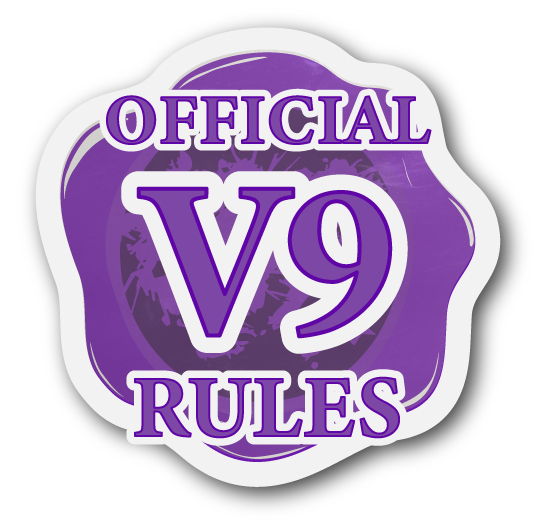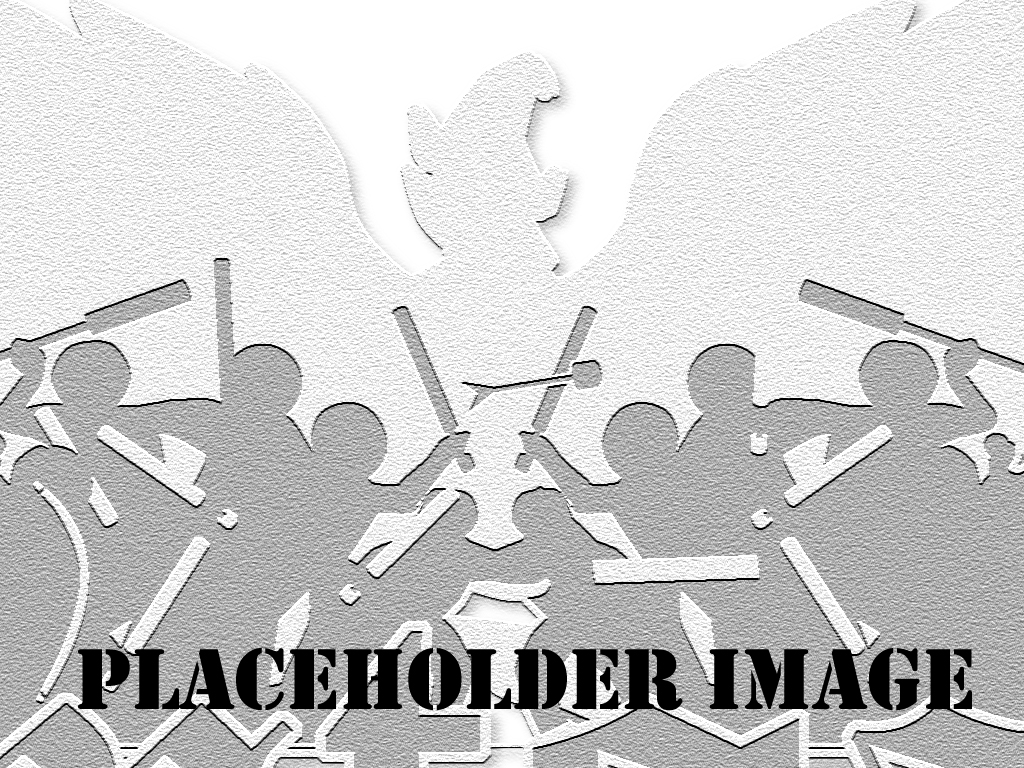Difference between revisions of "V9: Padding"
m |
m (→Foam Grades) |
||
| (3 intermediate revisions by the same user not shown) | |||
| Line 1: | Line 1: | ||
{{V9}} | {{V9}} | ||
| − | <onlyinclude>====<u>[[V9: Padding|Padding | + | <onlyinclude>====<u>[[V9: Padding|Padding and Foam]]</u>==== |
| − | All Amtgard [[V9: Weapons|weapons]] and [[V9: Shields|shields]] require some amount of padding to prevent player injuries. In this context, padding refers to either [[V9: Strike-Legal| Strike-Legal]] Padding or [[V9: Incidental Padding| Incidental]] Padding. The type required will determine which materials are acceptable to use for this purpose. If a piece of equipment requires | + | All Amtgard [[V9: Weapons|weapons]] and [[V9: Shields|shields]] require some amount of padding to prevent player injuries. In this context, padding refers to either [[V9: Strike-Legal| Strike-Legal]] Padding or [[V9: Incidental Padding| Incidental]] Padding. The type required will determine which materials are acceptable to use for this purpose. If a piece of equipment simply requires "padding", "foam" or "cushioning" with no other description, then you can meet that padding requirement with either Strike-Legal or Incidental Padding. |
| − | =====<big><u>Foam | + | =====<big><u>Foam Grades</u></big>===== |
| − | + | Foams can vary widely in terms of how they will act when used as padding so it is important to choose one that helps ensure your equipment will meet the [[V9: Universal Equipment Requirements|universal equipment requirements]] - notably safety and durability. When in doubt, take the time to learn from an experienced player or study an online construction tutorial. | |
| − | + | This rulebook may refer to two amtgard-defined categories of foam: Safety-grade and Comfort-grade. | |
| − | + | ||
| − | < | + | |
| − | * | + | <u>'''Safety-Grade Foam'''</u><br> |
| − | * | + | Safety-Grade Foams are sturdy and provide firm resistance to compression when tested with the pads of fingers, but are not rigid. The goal of Safety-Grade Foams is to provide the primary padding for weapons. Safety-Grade Foams should, when used in the specified thicknesses, prevent injuries and limit discomfort experienced by other players when they are struck with weapons during combat. |
| − | < | + | *Typical foams in this category include "blue camp pad", "pool noodle", and microcell foam. |
| − | + | ||
| − | *Very dense or rigid | + | '''Note:''' Safety-Grade foams sometimes come in multiple densities or stiffnesses and not all of them are safe for use on their own. Higher stiffness or density Safety-Grade Foams may not be suitable for use as the sole padding on a weapon but may improve the durability and striking comfort of a weapon when used as a base layer of foam closest to the core, with less stiff or dense Safety-Grade foam on top. Padding a weapon using multiple Safety-Grade Foams with different properties is referred to as building with "progressive resistance" or "progressive density". |
| + | |||
| + | |||
| + | <u>'''Comfort-Grade Foam'''</u><br> | ||
| + | Comfort-Grade Foams are squishy and less firm than Safety-Grade Foams while still being dense enough to provide some resistance to typical Amtgard weapon impacts. The goal of Comfort-Grade Foams is to provide greater shock absorption and further reduce discomfort from weapon impacts which may not be sufficiently mitigated by Safety-Grade Foams alone. | ||
| + | *Typical uses for Comfort-Grade Foams include additional padding on stabbing tips, arrows, and javelins. | ||
| + | *Comfort-Grade Foams should not be used on their own to pad a core. | ||
| + | *Typical foams in this category include "marine foam" and "high-density charcoal foam". | ||
| + | |||
| + | |||
| + | <u>'''Extra Notes'''</u><br> | ||
| + | *Very dense or rigid foam can be used as part of a structural core but it will not count towards any mandatory padding requirements. Polystyrene (hard TV packaging) is an example of a foam that is too rigid. | ||
| + | *Very soft and light foam can be used to add shape or extra comfort but will not count towards any mandatory padding requirements.</onlyinclude><br><br> | ||
| + | ---- | ||
| + | <gallery mode="slideshow" showthumbnails caption="Image Gallery"> | ||
| + | File:23014---PlaceHolderImage4x3.jpg|Example 1 | ||
| + | File:23014---PlaceHolderImage4x3.jpg|Example 2 | ||
| + | File:23014---PlaceHolderImage4x3.jpg|Example 3 | ||
| + | File:23014---PlaceHolderImage4x3.jpg|Example 4 | ||
| + | File:23014---PlaceHolderImage4x3.jpg|Example 5 | ||
| + | </gallery><br> | ||
{{V9 Weapon Construction Terms}} | {{V9 Weapon Construction Terms}} | ||
Latest revision as of 05:19, 7 December 2023
- The Amtwiki is the official home and primary source for Amtgard V9 Rules as of February 25, 2023.
- These rules are currently in Open Alpha Playtest. See the Playtest Disclaimer for more details.
- To learn more about Amtgard V9 Development, please visit Amtgard.com.
- To view the current Amtgard V8 ruleset, please see the Amtgard V8 Rulebook.
Padding and Foam
All Amtgard weapons and shields require some amount of padding to prevent player injuries. In this context, padding refers to either Strike-Legal Padding or Incidental Padding. The type required will determine which materials are acceptable to use for this purpose. If a piece of equipment simply requires "padding", "foam" or "cushioning" with no other description, then you can meet that padding requirement with either Strike-Legal or Incidental Padding.
Foam Grades
Foams can vary widely in terms of how they will act when used as padding so it is important to choose one that helps ensure your equipment will meet the universal equipment requirements - notably safety and durability. When in doubt, take the time to learn from an experienced player or study an online construction tutorial.
This rulebook may refer to two amtgard-defined categories of foam: Safety-grade and Comfort-grade.
Safety-Grade Foam
Safety-Grade Foams are sturdy and provide firm resistance to compression when tested with the pads of fingers, but are not rigid. The goal of Safety-Grade Foams is to provide the primary padding for weapons. Safety-Grade Foams should, when used in the specified thicknesses, prevent injuries and limit discomfort experienced by other players when they are struck with weapons during combat.
- Typical foams in this category include "blue camp pad", "pool noodle", and microcell foam.
Note: Safety-Grade foams sometimes come in multiple densities or stiffnesses and not all of them are safe for use on their own. Higher stiffness or density Safety-Grade Foams may not be suitable for use as the sole padding on a weapon but may improve the durability and striking comfort of a weapon when used as a base layer of foam closest to the core, with less stiff or dense Safety-Grade foam on top. Padding a weapon using multiple Safety-Grade Foams with different properties is referred to as building with "progressive resistance" or "progressive density".
Comfort-Grade Foam
Comfort-Grade Foams are squishy and less firm than Safety-Grade Foams while still being dense enough to provide some resistance to typical Amtgard weapon impacts. The goal of Comfort-Grade Foams is to provide greater shock absorption and further reduce discomfort from weapon impacts which may not be sufficiently mitigated by Safety-Grade Foams alone.
- Typical uses for Comfort-Grade Foams include additional padding on stabbing tips, arrows, and javelins.
- Comfort-Grade Foams should not be used on their own to pad a core.
- Typical foams in this category include "marine foam" and "high-density charcoal foam".
Extra Notes
- Very dense or rigid foam can be used as part of a structural core but it will not count towards any mandatory padding requirements. Polystyrene (hard TV packaging) is an example of a foam that is too rigid.
- Very soft and light foam can be used to add shape or extra comfort but will not count towards any mandatory padding requirements.
Weapons General Rules · Weapon Construction Terms · Melee Weapons · Projectile Weapons · Siege Weapons
Equipment Equipment Basics · Equipment Use Terms · Weapons · Shields · Armor · Color Code · Visual Indicators

